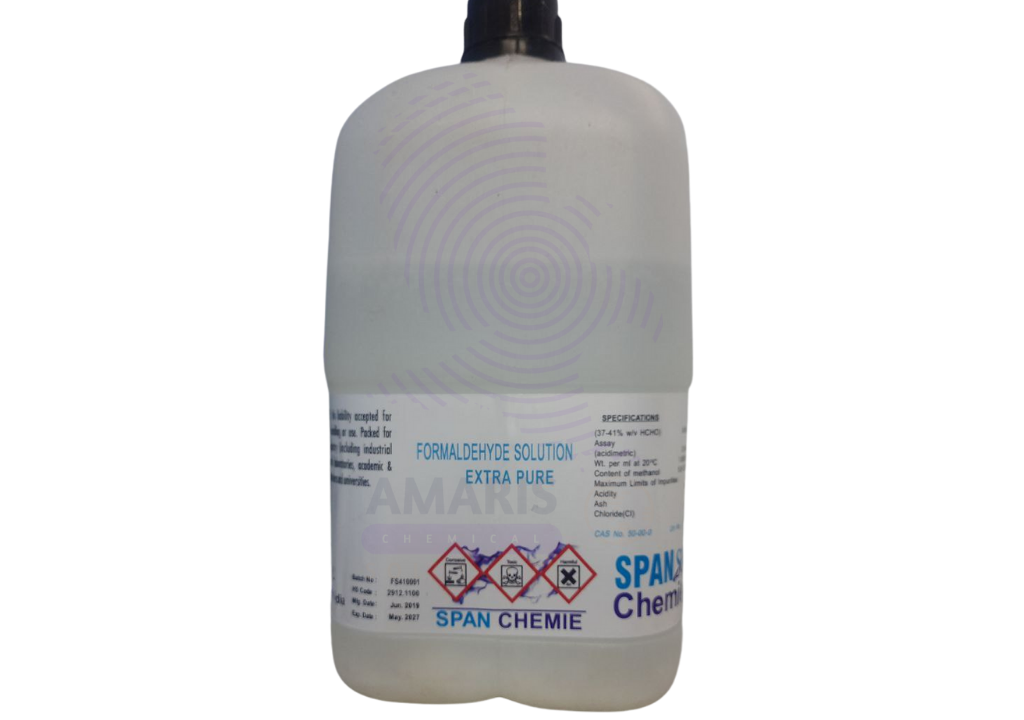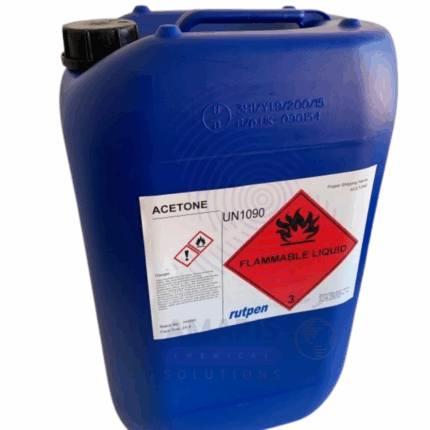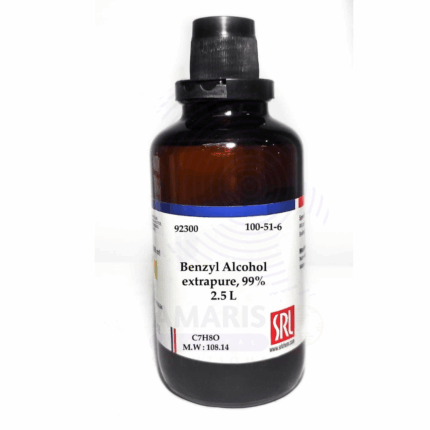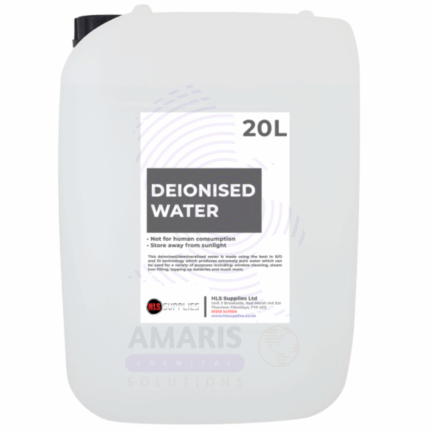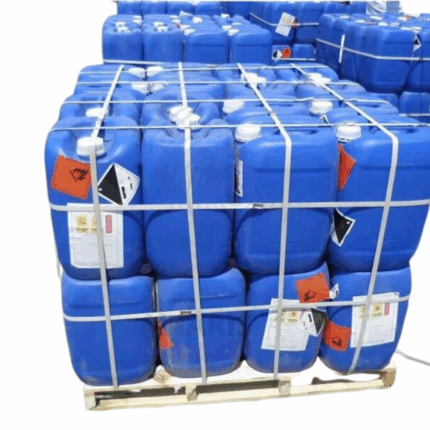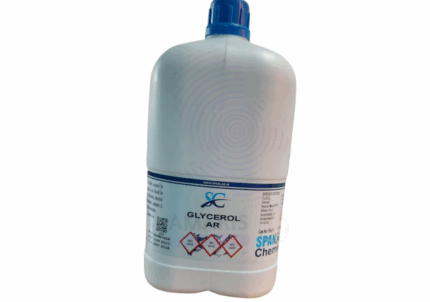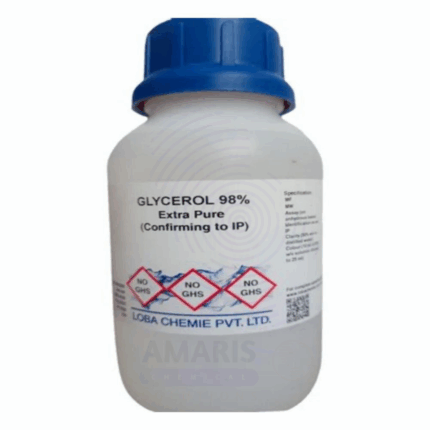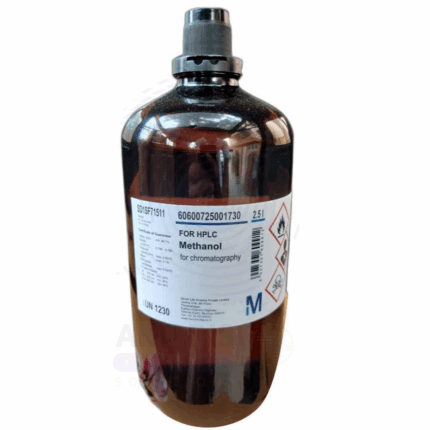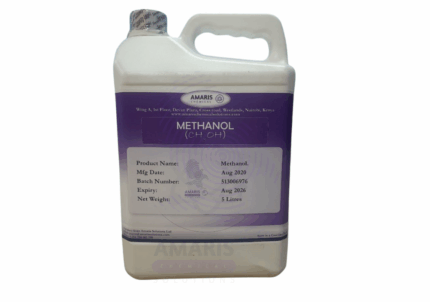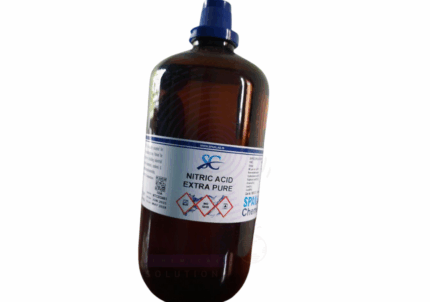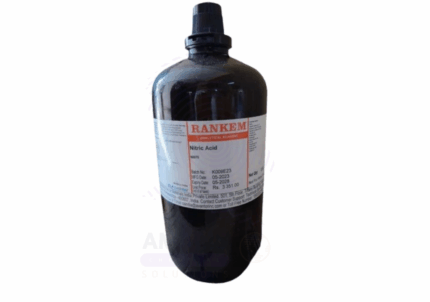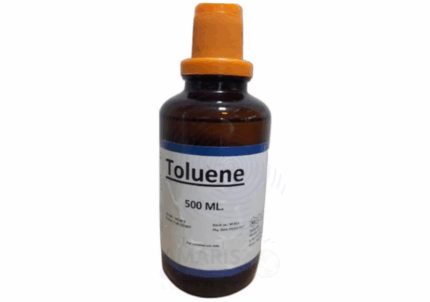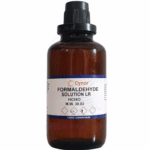
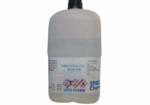
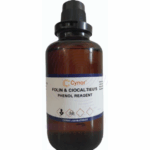
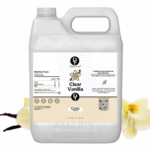
Formaldehyde (Formalin) Extra Pure
$ 26.35 Original price was: $ 26.35.$ 26.21Current price is: $ 26.21.
Formaldehyde (Formalin) Extra Pure is a highly concentrated and refined aqueous solution of formaldehyde gas, commonly used in laboratories, industrial processes, and research applications. Renowned for its potent disinfectant and preservative properties, it is widely employed in histology for tissue fixation, in microbiology for sterilization, and in various chemical syntheses as a versatile reagent and building block. Its extra pure grade ensures minimal impurities, making it suitable for sensitive analytical procedures, formulation work, and high-precision chemical reactions. This product must be handled with care due to its volatility and toxic nature, especially in enclosed environments.
Formaldehyde (Formalin) Extra Pure
Primary Uses
- Tissue fixation in histology and pathology:
Formaldehyde is widely used as a fixative to preserve biological tissues by cross-linking proteins, preventing decay and maintaining cellular structure for microscopic examination. - Reagent in synthesis and chemical reactions:
Serves as a precursor or intermediate in organic synthesis, particularly for producing resins (e.g., phenol-formaldehyde) and various laboratory-grade chemicals.
Secondary Uses
- Disinfectant and sterilizing agent:
Used in controlled lab environments to sterilize surfaces, equipment, and biosafety cabinets, especially in microbiology and pathology labs. - Standard solution preparation:
Employed in the preparation of calibration standards or titration reagents in analytical chemistry. - DNA and RNA crosslinking studies:
Utilized in molecular biology for crosslinking nucleic acids and proteins during chromatin immunoprecipitation (ChIP) assays.
| PACK SIZE |
2.5 Litres Glass bottle |
|---|
1. Basic Identification Attributes
- Chemical Name: Formaldehyde
- Chemical Formula: CH₂O
- CAS Number: 50-00-0
- Molecular Weight: 30.03 g/mol
- Grade: Extra Pure (Laboratory Reagent Grade)
- Physical State: Usually supplied as a 37–40% aqueous solution (formalin)
- Appearance: Clear, colorless liquid
- Odor: Strong, pungent, irritating odor
2. Physical & Chemical Properties
- Boiling Point: ~96 °C (aqueous solution)
- Melting Point: −92 °C (pure gas)
- Solubility: Miscible with water, alcohol, and other polar solvents
- Vapor Pressure: High at room temperature
- pH: Typically acidic (around 3.5–5.5 for formalin)
- Stability: Stable in aqueous solution with methanol stabilizer
3. Safety & Hazard Attributes
- Hazard Classification: Toxic, Carcinogenic, Corrosive
- GHS Symbols: ☠️ (Toxic), ⚠️ (Health Hazard), 🧪 (Corrosive)
- Hazard Statements:
- H301: Toxic if swallowed
- H331: Toxic if inhaled
- H311: Toxic in contact with skin
- H350: May cause cancer
- H317: May cause allergic skin reaction
- H314: Causes severe skin burns and eye damage
- PPE Requirements:
- Nitrile or butyl rubber gloves
- Lab coat and chemical-resistant apron
- Full-face shield or safety goggles
- Use only in a certified fume hood
- First Aid Measures:
- Inhalation: Move to fresh air, seek medical help
- Skin Contact: Wash with plenty of soap and water
- Eye Contact: Rinse cautiously with water for 15 minutes
- Ingestion: Rinse mouth, do NOT induce vomiting, get medical help immediately
4. Storage & Handling Attributes
- Storage Conditions:
- Keep in tightly sealed containers
- Store in a cool, well-ventilated place away from direct sunlight
- Avoid sources of ignition and oxidizing agents
- Handling Notes:
- Always use with adequate ventilation
- Do not mix with acids or strong oxidizers
- Avoid breathing vapors
5. Regulatory & Compliance Attributes
- UN Number: UN1198 (for formalin)
- Regulatory Status:
- Listed as a carcinogen by IARC and NTP
- Regulated under OSHA, REACH, and other chemical safety standards
- Restricted use in food, cosmetics, and consumer products
6. Laboratory Applications
- Primary Uses:
- Fixative in histology and pathology (tissue preservation)
- Disinfectant in laboratories
- Synthesis of resins (e.g., urea-formaldehyde)
- Reagent in analytical chemistry
- Secondary Uses:
- Embalming fluid component
- Preservative in biological specimens
- Crosslinking agent for proteins and nucleic acids in molecular biology
SAFETY PRECAUTIONS
Personal Protective Equipment (PPE):
- Wear lab coat, nitrile gloves, and chemical splash goggles.
- Use in a well-ventilated area or fume hood to avoid inhalation.
- Face shield may be necessary for large volume handling.
Handling:
- Avoid contact with skin, eyes, and clothing.
- Prevent inhalation of vapors or mists.
- Do not eat, drink, or smoke when handling.
- Handle with care as formaldehyde is toxic and a suspected carcinogen.
Storage:
- Store in a cool, well-ventilated area away from direct sunlight.
- Keep container tightly closed and away from acids, bases, and oxidizers.
- Use only non-metallic containers if long-term storage is needed.
- Label clearly and lock if required.
FIRST AID MEASURES
Inhalation:
- Remove the victim to fresh air immediately.
- If breathing is difficult, administer oxygen.
- Seek urgent medical attention.
Skin Contact:
- Immediately wash with plenty of water and soap for at least 15 minutes.
- Remove contaminated clothing and shoes.
- Seek medical attention if irritation or pain persists.
Eye Contact:
- Rinse thoroughly with water for several minutes.
- Remove contact lenses if present and easy to do.
- Continue rinsing and seek immediate medical attention.
Ingestion:
- Rinse mouth with water.
- Do NOT induce vomiting.
- Seek immediate medical attention.
FIRE FIGHTING MEASURES
Flammability:
- Flammable liquid and vapor. Flash point ~60°C.
- Vapors may form explosive mixtures with air.
Extinguishing Media:
- Use alcohol-resistant foam, dry chemical, or carbon dioxide (CO₂).
- Water spray can be used to cool containers but may spread fire if used directly.
Hazardous Combustion Products:
- Emits toxic fumes including carbon monoxide (CO), carbon dioxide (CO₂), and formaldehyde vapors.
Firefighter Protection:
- Use self-contained breathing apparatus (SCBA) and full protective gear.
- Approach fire from the upwind direction and avoid inhaling fumes.


 Preservatives(food)
Preservatives(food) Flavor Enhancers
Flavor Enhancers Acidulants
Acidulants Sweeteners
Sweeteners Antioxidants
Antioxidants Colorants(food)
Colorants(food) Nutraceutical Ingredients (food)
Nutraceutical Ingredients (food) Nutrient Supplements
Nutrient Supplements Emulsifiers
Emulsifiers
 Collectors
Collectors Dust Suppressants
Dust Suppressants Explosives and Blasting Agents
Explosives and Blasting Agents Flocculants and Coagulants
Flocculants and Coagulants Frothers
Frothers Leaching Agents
Leaching Agents pH Modifiers
pH Modifiers Precious Metal Extraction Agents
Precious Metal Extraction Agents
 Antioxidants(plastic)
Antioxidants(plastic) Colorants (Pigments, Dyes)
Colorants (Pigments, Dyes) Fillers and Reinforcements
Fillers and Reinforcements Flame Retardants
Flame Retardants Monomers
Monomers Plasticizers
Plasticizers Polymerization Initiators
Polymerization Initiators Stabilizers (UV, Heat)
Stabilizers (UV, Heat)
 Antifoaming Agents
Antifoaming Agents Chelating Agents
Chelating Agents Coagulants and Flocculants
Coagulants and Flocculants Corrosion Inhibitors
Corrosion Inhibitors Disinfectants and Biocides
Disinfectants and Biocides Oxidizing Agents
Oxidizing Agents pH Adjusters
pH Adjusters Scale Inhibitors( water)
Scale Inhibitors( water)
 Antioxidants(cosmetic)
Antioxidants(cosmetic) Emollients
Emollients Fragrances and Essential Oils
Fragrances and Essential Oils Humectants
Humectants Preservatives
Preservatives Surfactants(cosmetic)
Surfactants(cosmetic) Thickeners
Thickeners UV Filters
UV Filters
 Fertilizers
Fertilizers Soil Conditioners
Soil Conditioners Plant Growth Regulators
Plant Growth Regulators Animal Feed Additives
Animal Feed Additives Biostimulants
Biostimulants Pesticides (Herbicides, Insecticides, Fungicides)
Pesticides (Herbicides, Insecticides, Fungicides)
 Active Pharmaceutical Ingredients (APIs)
Active Pharmaceutical Ingredients (APIs) Excipients
Excipients Solvents(pharmaceutical)
Solvents(pharmaceutical) Antibiotics
Antibiotics Antiseptics and Disinfectants
Antiseptics and Disinfectants Vaccine Adjuvants
Vaccine Adjuvants Nutraceutical Ingredients (pharmaceutical)
Nutraceutical Ingredients (pharmaceutical) Analgesics & Antipyretics
Analgesics & Antipyretics
 Analytical Reagents
Analytical Reagents Solvents(lab)
Solvents(lab) Chromatography Chemicals
Chromatography Chemicals Spectroscopy Reagents
Spectroscopy Reagents microbiology-and-cell-culture-reagents
microbiology-and-cell-culture-reagents Molecular Biology Reagents
Molecular Biology Reagents Biochemical Reagents
Biochemical Reagents Inorganic and Organic Standards
Inorganic and Organic Standards Laboratory Safety Chemicals
Laboratory Safety Chemicals Specialty Laboratory Chemicals(Special Laboratory Equipment)
Specialty Laboratory Chemicals(Special Laboratory Equipment)
 Demulsifiers
Demulsifiers Hydraulic Fracturing Fluids
Hydraulic Fracturing Fluids Scale Inhibitors(oil)
Scale Inhibitors(oil) Surfactants(oil)
Surfactants(oil) Drilling Fluids
Drilling Fluids
 Dyes and Pigments
Dyes and Pigments Bleaching Agents
Bleaching Agents Softening Agents
Softening Agents Finishing Agents
Finishing Agents Antistatic Agents
Antistatic Agents
 Admixtures
Admixtures Waterproofing Agents
Waterproofing Agents Sealants and Adhesives
Sealants and Adhesives Curing Compounds
Curing Compounds Concrete Repair Chemicals
Concrete Repair Chemicals Anti-Corrosion Coatings
Anti-Corrosion Coatings
 Surfactants(cleaning)
Surfactants(cleaning) Builders
Builders Enzymes
Enzymes Solvents (Cleaning)
Solvents (Cleaning) Fragrances
Fragrances
 Electronic Chemicals
Electronic Chemicals Catalysts
Catalysts Lubricants
Lubricants Photographic Chemicals
Photographic Chemicals Refrigerants
Refrigerants Automotive chemicals
Automotive chemicals Pyrotechnic Chemicals
Pyrotechnic Chemicals
 Biodegradable Surfactants
Biodegradable Surfactants Bio-based Solvents
Bio-based Solvents Renewable Polymers
Renewable Polymers Carbon Capture Chemicals
Carbon Capture Chemicals Wastewater Treatment Chemicals
Wastewater Treatment Chemicals
 Pigments
Pigments Solvents(paint)
Solvents(paint) Specialty Coatings
Specialty Coatings Binders/Resins
Binders/Resins Additives
Additives Driers
Driers Anti-Corrosion Agents
Anti-Corrosion Agents Functional Coatings
Functional Coatings Application-Specific Coatings
Application-Specific Coatings
 Fresh Herbs
Fresh Herbs Ground Spices
Ground Spices Whole Spices
Whole Spices Spice Blends
Spice Blends Dried Herbs
Dried Herbs
 Leavening Agents
Leavening Agents Dough Conditioners
Dough Conditioners Flour Treatments
Flour Treatments Fat Replacers
Fat Replacers Decoratives
Decoratives Preservatives(baking)
Preservatives(baking)
 Plasticizers & Softeners
Plasticizers & Softeners Reinforcing Agents
Reinforcing Agents Adhesion Promoters
Adhesion Promoters Vulcanizing Agents
Vulcanizing Agents Antidegradants
Antidegradants Blowing Agents
Blowing Agents Fillers & Extenders
Fillers & Extenders Accelerators & Retarders
Accelerators & Retarders
